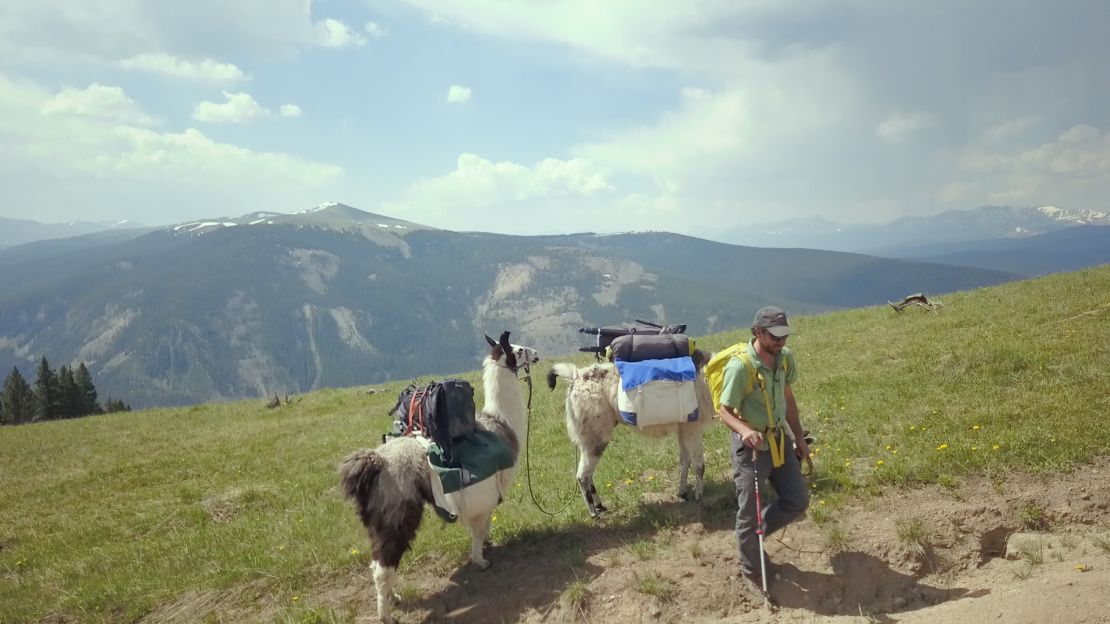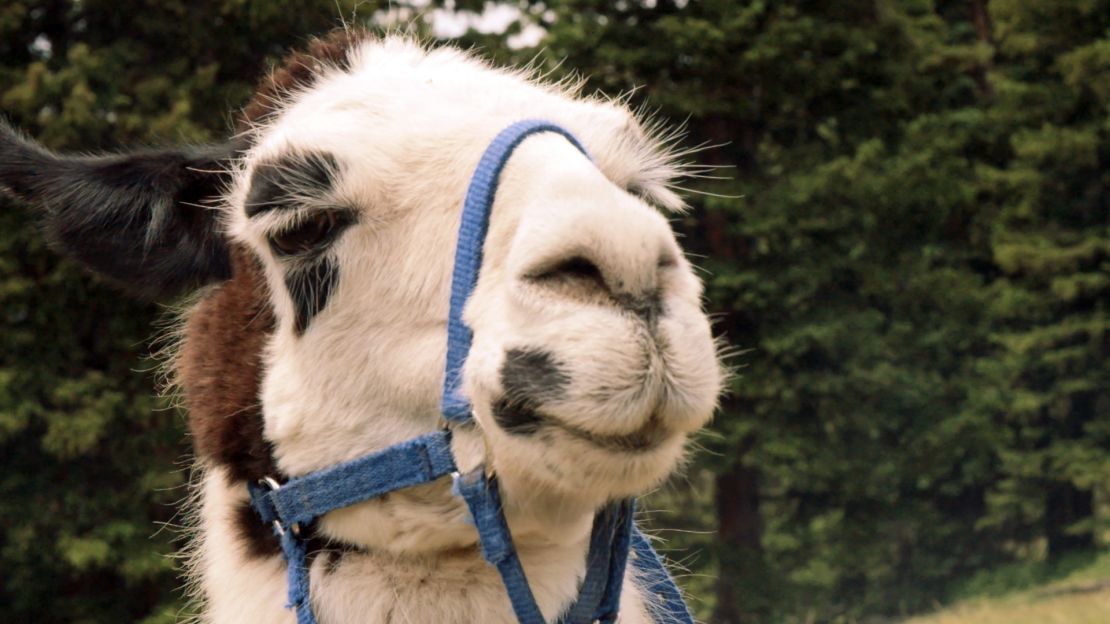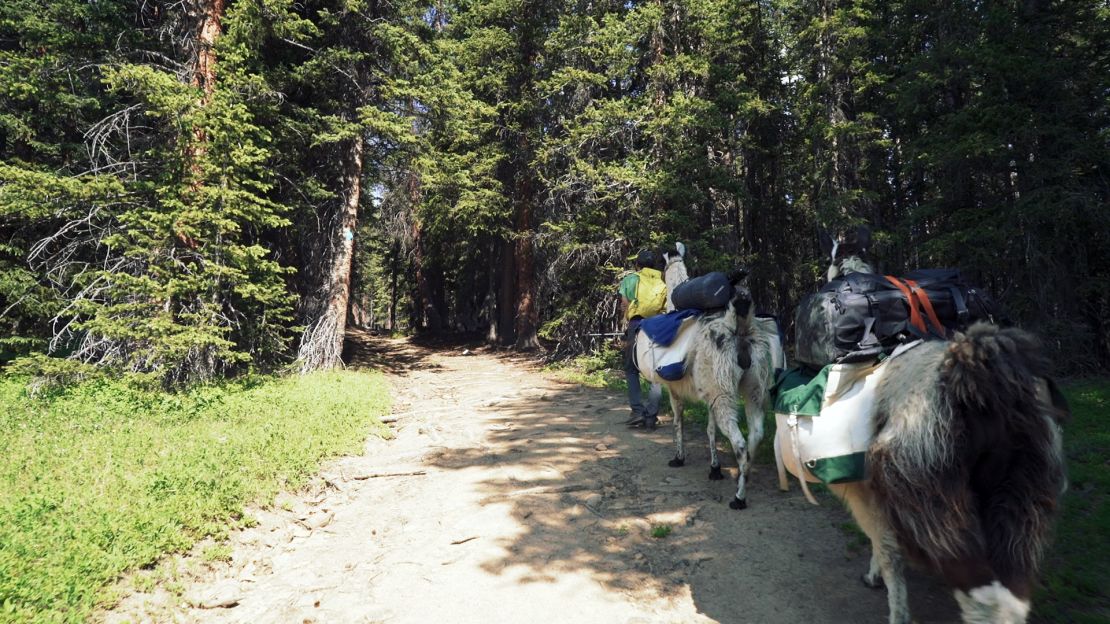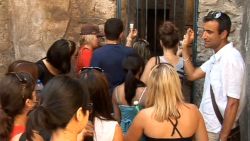Going backpacking in Colorado is a no-brainer: There are 58 peaks exceeding 14,000 feet, hundreds of miles of trails and, of course, dreamy views of snowcapped mountains.
For long treks, however, a major drawback is toting around all that gear. But what if you had llamas along to do all the heavy lifting? That’s when the experience starts to feels a little less treacherous and a lot more like glamping.
For hundreds of years llamas have been used as pack animals in South America. In Colorado, on the other hand, llama trekking has only been around since the 1980s and still probably comes as a surprise to most.
For adventure travel operators such as Paragon Guides in Vail, adding llamas to the mix in the 1990s was a natural fit.

The Elliott family, owners of Paragon Guides, realized it was easier to hike much deeper into the wilderness with young ones in tow if they brought llamas along. Soon after, they added the llamas onto the employee roster, and they’ve been a hit ever since.
“Along the way, people gain close relationships with their llamas and they almost want to take them home with them at the end of the trip,” says Will Elliott, owner of Paragon Guides.
Plus, the furry porters are gentle, dependable and surefooted. They ford creeks with ease, spring over fallen logs – who knew a llama could leap upwards of three feet into the air?
And they are natural grazers, so there is no need to bring food for them. Not to mention, they can carry up to a third of their body weight.
This means you get to pack things you might normally nix. Think bottles of wine, two-person tents, table, chairs and cooking equipment.
An added bonus: They act as a natural bear repellent thanks to their keen eyesight and startling vocal reactions.
The llamas let out piercing sounds to drive threatening animals away. And from time to time they also hum in a way that is vaguely reminiscent of Chewbacca or a purring cat.
Hitting the trail

Elliott offers several opportunities to get chummy with the lovable, four-legged creatures. One of the most spectacular, he says, is the 4- to 5-night hike between Vail and Aspen where guests make their way through the White River National Forest. Hikers trek about five to nine miles a day while being treated to views of the Maroon Bells and the Sawatch Range.
When it’s time to catch some shut-eye, 10th Mountain Division Huts along the route make for rustic and cozy sleeping quarters. Midway through the trip, guests spend a night at a dude ranch where they have access to a hot tub and showers.
With the elevation changes throughout the 45-mile excursion, it’s possible to see everything from aspen trees to spruce forests to Douglas firs.
“The higher you go, the less vegetation there is but the greater the views are,” Elliott says. “The lower you are in elevation, the more wildflowers and trees and rivers and streams. You’re going to see more abundant wildlife, as well.”
Animals with personality

For those who aren’t ready to commit to a long hike, the “Take a llama to lunch” option might be a better fit. It lasts for four hours and still gives guests quality bonding time with the animals.
The llamas are endearing in many ways: long lashes, underbites and pointy ears. Add to that their undemanding nature and their names like Sneffels and Lemon, and you’ve got yourself a fun trail companion.
While llamas have the tendency to spit, Elliot says it’s rarely directed at people.
“It’s more of a posturing and a pecking-order thing amongst the group of llamas or the herd of llamas that they’re with, trying to show who’s boss, who has the most muscle.”
Generally, though, well-trained llamas are friendly and hardworking. On an average day, in fact, llamas can trek up to 15 miles. And with the soft pads on their feet, they don’t have much impact on the ecosystem.
“I used to backpack in my 20s,” says Bobbie Goldstein, 66. “After I raised my kids, I wanted to do overnights again in the high country of Colorado, but I could no longer carry a pack.”
That’s when she started trekking with llamas.
“It is fun to take care of them, learn how to saddle and load the packs when you move your campsite or change huts,” says Goldstein. “They create an atmosphere of tranquility and serenity. It is so neat to see their silhouettes as they sleep sitting up, especially when there is a full moon.”
For Elliott, llama trekking gets people to detox from the technology in our lives.
“We can sit on the ground. We can just enjoy each other’s conversation, enjoy the views and just really get back to that simplistic lifestyle that we all once lived.”
If you go: Vail to Aspen llama Treks are available from July through September for $2,125 per person for 4 to 6 people or $1,820 per person for 6-12 people. Take a llama to lunch program in the Arrowhead Ski Area is a $298 base fee for 1 to 2 people and an additional $89 per person. For more information, go to paragonguides.com/llama-trekking.
Sarah Sekula is an Orlando-based travel writer and video host. Follow her adventures @wordzilla and @wordzillapics.












